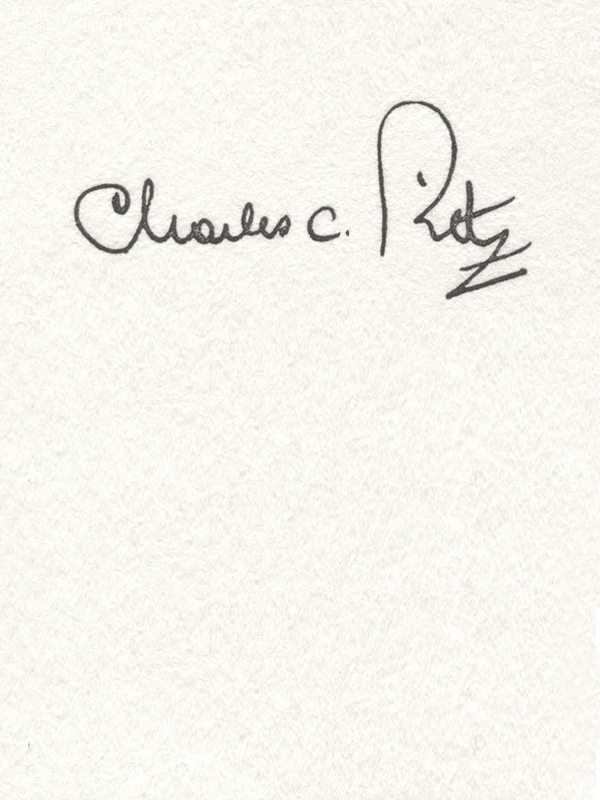
Charles ritz
Charles ritz

As Charles Ritz said “The charm of fly fishing is the many failures you record and the unexpected things you manage to overcome. At sixty years of age, I am happier than ever whenever I anticipate the possibility of getting a rise on my artificial, if I don’t make a mistake.”
These lines, taken from “A Fisher’s life” in the chapter of confessions, sum up a philosophy of fly fishing along with a desire to learn and improve that for the rest of his life was not to leave Charles Ritz.
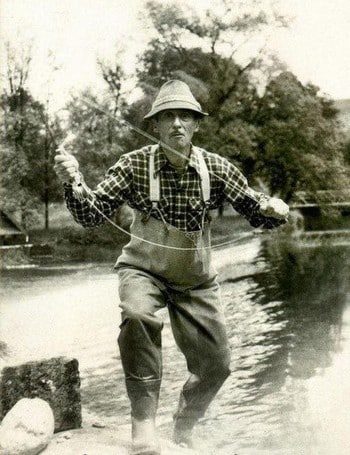
Note the perfect tension of the line between the left hand and the first ring of the cane.
He had set up a room where he gave new life to canes that he bought from New York secondhand dealers.
Before becoming one of the world’s greatest fly fishermen and rodmakers, he had worked in the hotel business in New York at the Ritz Carlton where his father had sent him in 1916. In the basement of the hotel, he had set up a room where he shortened, trimmed, moved the ferrules, changed the rings, and re-varnished split canes that he bought from New York secondhand dealers. All this he tells us “to the great despair of the hotel manager who supported my audacity because I was Dad’s son”. Very quickly, among the hotel’s fishing guests to whom he gave his creations a try, his reputation as a technician spread and one day he found one of his rods in the most chic fishing store in the world, on Fifth Avenue, at “Abercrombie and Fitch”. It was thirty times more expensive than he had paid for it in a pawn shop, and he had only taken off two inches of it.

The Ritz Carlton in New York where he was supposed to learn the hotel business.

The Beaverkill, in the Catskill in the fall, where Charles Ritz fished a lot during his New York stay.
“If only,” I said, “I could visit your workshop in Highland Mills.”
In 1922, when he became Assistant Director in New York, during one of his many weekends of fishing on the rivers of the Catskills (150 km north of New York), he met Fred Payne, one of the pioneers and tenors with Hiram Leonard of the construction of split bamboo rods. From that day, he says, my initiation dates. If only,” I said, “I could visit your workshop in Highland Mills, what a joy for my passion. He allowed me to do so, and from then on I spent most of my weekends with him, Saturdays in the workshop, learning the craft, and Sundays on the river, my ears wide open to his valuable advice.”

Hiram Leonard, one of the pioneers, with Fred Payne, of the construction of split bamboo canes.

The doorman of the Ritz Hotel, Place Vendôme in 1932.
It is in the back store that he receives what all Paris counts of “felés de la mouche”.
In 1928 at the request of his mother (his father and brother died at the end of the war) Charles Ritz returned to France, but as Madame César Ritz had a masterful hand in the Place Vendôme hotel, he opened a luxury shoe store on the rue du Faubourg Saint-Honoré to keep himself busy. Although he invented the “après ski” shoe in the thirties, this store was only a front. It was in the back of the store that the serious business took place. There, in the company of Pierre Creusevaut, Charles Ritz makes rods, balances silks, tinkers with reels and every evening from six o’clock onwards, receives what all of Paris counts as “felés de la mouche”. The editorial committees of the magazine “Au bord de l’eau” with Tony Burnand, Roger Pujo, Louis de Boisset, were also held there, in an incredible jumble of rods whose varnish was drying, pots of glue, vices, files, feathers, because flies were also tied there…

Pierre Creusevaut and Charles Ritz, were inseparable accomplices for forty years.
He will make Pierre Creusevaut the world champion that we know.
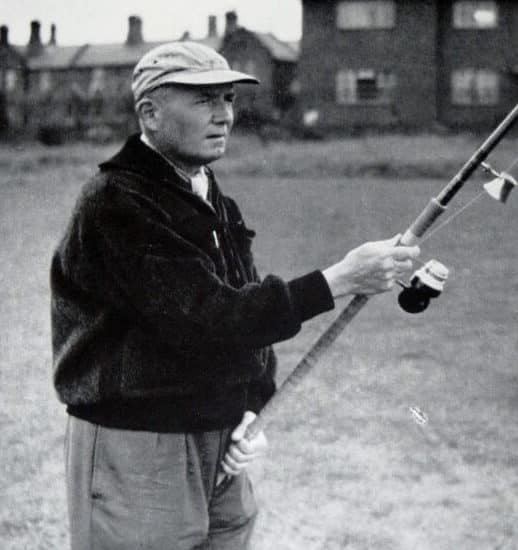
Pierre Creusevaut, the multiple world champion of casting, both "fly" and "shot".
Upon his return to France, Charles Ritz realized that: “my friends were all using much heavier equipment than mine, according to the English method, and that my small light American rods were giving me much better results.” In fact whether on the banks of the Risle or the Andelle, or on the lawns of the Bois de Boulogne during the casting competitions which were very fashionable during the inter-war period, he did wonderfully. In 1930, 31 and 33 he was French amateur champion in the “small river” precision events and in distance proves that with a rod of less than 130g it is possible to throw a fly to more than thirty meters. It is him who will put the foot to the stirrup to Pierre Creusevaut and will advise him to make him the world champion that we know.
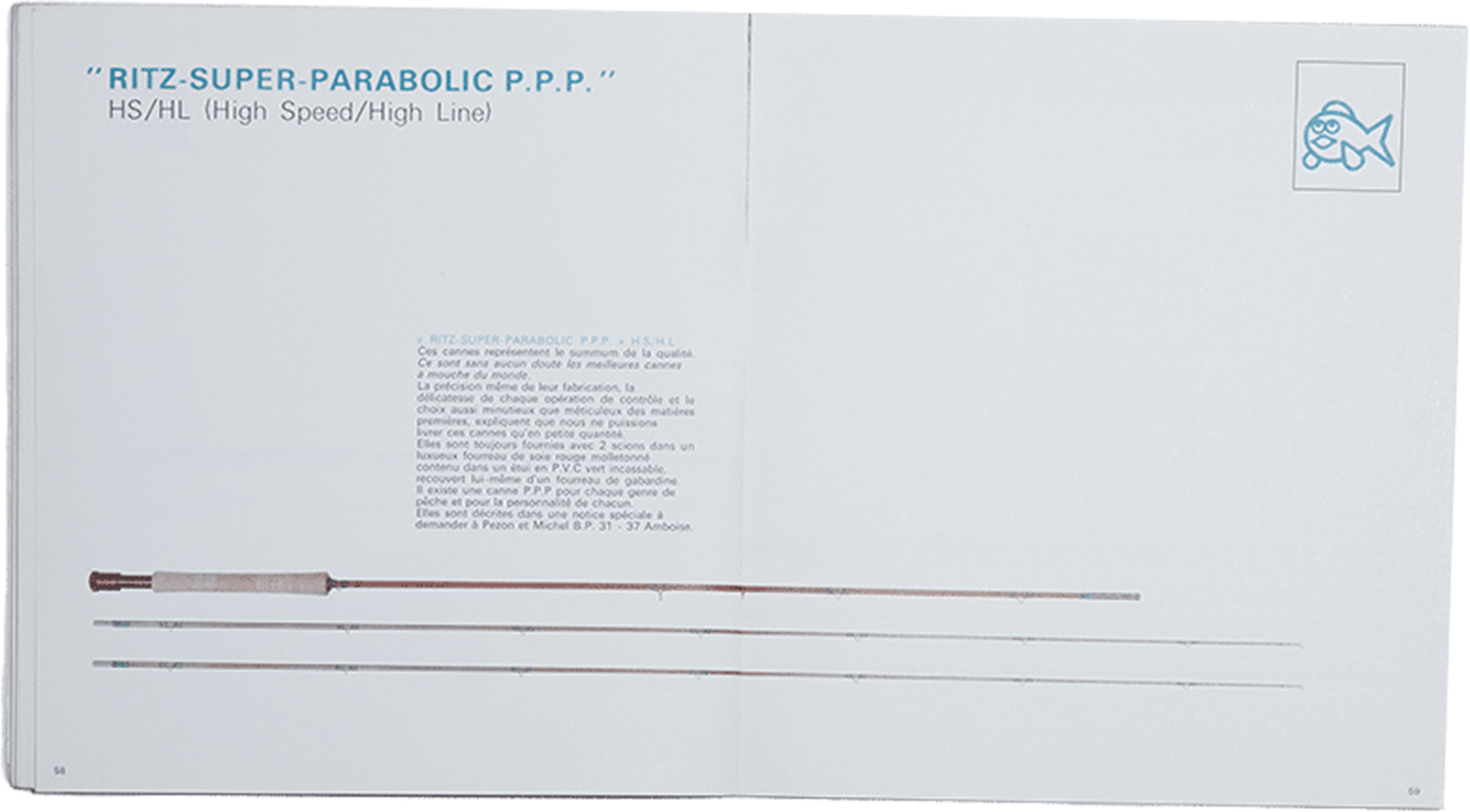
The Ritz P.P.P. split rods made by Pezon & Michel are the only mass-produced rods that can compete with the rods of the best American craftsmen, like Payne or Garrisson.
In 1937, he became technical advisor to Pezon and Michel, whose worldwide reputation in fishing tackle was equalled only by Hardy’s at the time. In 1938 he created the first Parabolic rod. Charles Ritz is also the father of the fantastic Télébolic spinning rods and of course, after the war, of the fantastic PPP series. Apart from the American craftsmen, in the first rank of which Jim Payne, Fred’s son, no mass-produced split cane, whether by Hardy, Farlow, Sharpe or even Orvis, reaches the ferrule of a PPP of the great years (1955 to 1965).
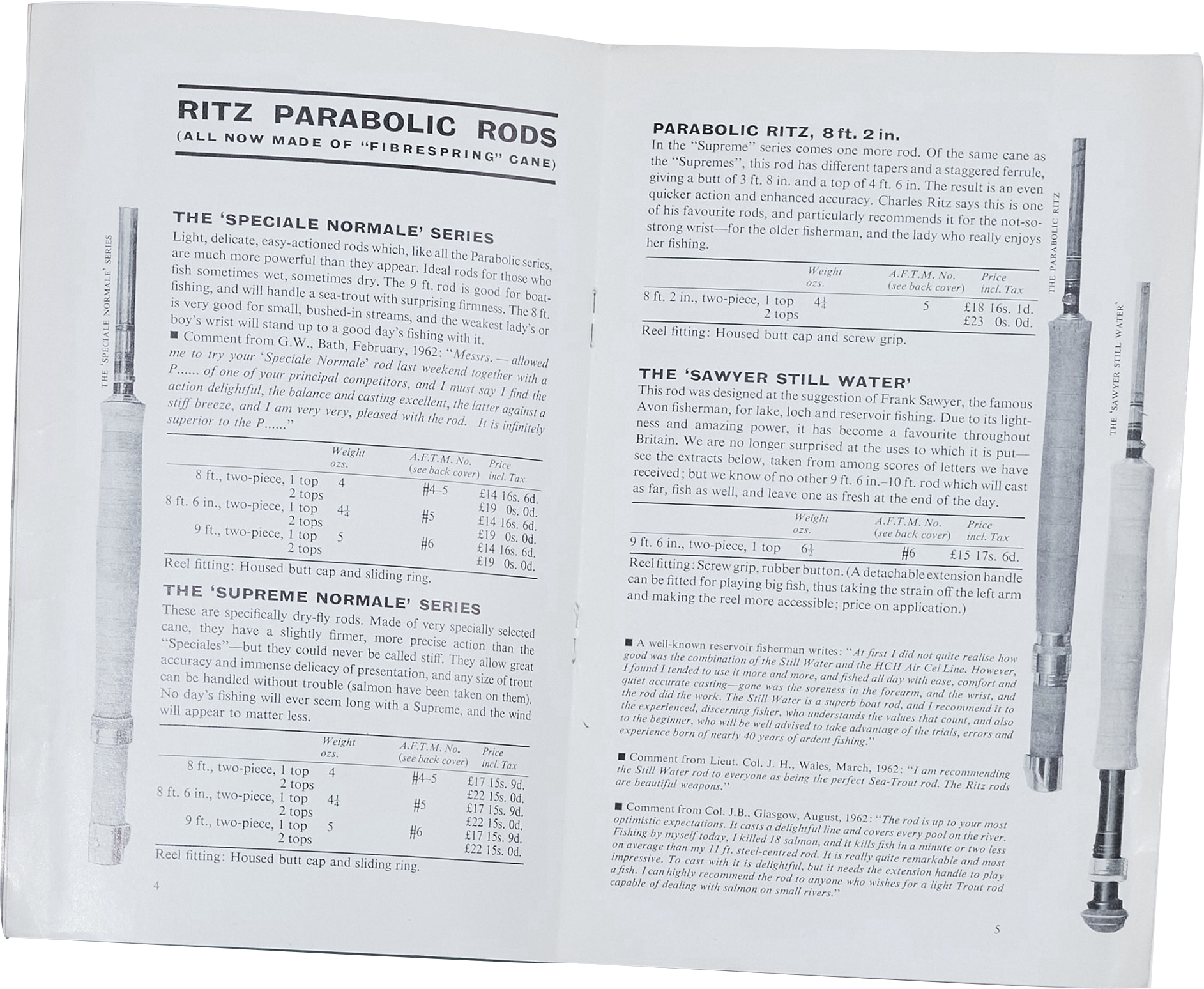
The "Parabolic" rods developed by Charles Ritz, were so appreciated on the other side of the Channel and on the other side of the Atlantic that Pezon & Michel, had to make a catalog in English language.


